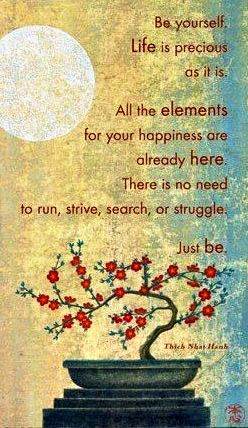
Over 400 types of therapies have been identified (Karasu, 1992; Bangar and Beutler, 1994), ranging from the esoteric, e.g. vegetotherapy (Reichian body work) to traditional Freudian psychoanalysis – and everything in between. I will describe only the most common forms of therapies, where the principal tool of change is conversation. This is in contrast to somatic therapies (working with the body), art therapies (music, dance, drama, painting, drawing, etc.), and play therapies (techniques geared mainly to children, where the intervention is matched to the developmental level, allowing expression of feelings without words.
PSYCHODYNAMIC
Psychodynamic therapy focuses on increasing awareness of one’s unconscious Internal Reality and helps identify/understand how historical/developmental influences have contributed to current issues. This fosters insight and experiencing of material, which is a catalyst for change. Making connections between past and present, tolerating feelings, imbuing meaning, and building stronger internal resources – this is all part of the process, and a variety of interventions are used toward this end.
There are multiple “schools” within psychodynamic and analytic theory. Three of the most prominent are:
- Ego Psychology: The focus is an enhancing and/or maintaining the client’s optimal functioning, i.e. capacity for adaptation, resiliency, emotional regulation, coping abilities, etc.
- Object-Relations: Emphasizes that, from birth, human beings are shaped in relation to the people around them. We define ourselves in maintaining relation with others (and vice-versa) while simultaneously differentiating from them. As a childhood legacy, our internal representations of others are later played out in adulthood, often repeating maladaptive patterns in an effort to master them.
- Self-Psychology: Focuses on the client’s perception of his/her experience of Self, especially related to unmet developmental needs. This includes the presence or relative absence of self “esteem”, with attachment and/or differentiation from others.

Each of these “schools” or theories has encompassing formulations of personality, change conceptualizations, techniques, contraindications, etc.
COGNITIVE
Cognitive therapy is based on the premise that much of what we feel is determined by what we think. The approach helps re-design maladaptive thinking, using skills such as indentifying cognitive distortions and providing rebuttals, heightening the client’s awareness of his/her thought patterns and actively guiding emotional change.
BEHAVIOR
Behavior therapy is a structured system of reward-based activities focused on engaging the client in positively reinforcing behaviors – the emphasis is on setting realistic, achievable goals, with a host of steps designed to approximate the goal. A host of homework may be used and monitored from session to session.
INTERPERSONAL
The focus of interpersonal therapy is on current social relationships and improving interpersonal skills – this may be applied to family, friend, colleagues, etc. Coping skills, communications, role transitions, skills training, i.e. strategies for dealing effectively with conflict, assertiveness, etc.
EXISTENTIAL
Existential therapy operates on the assumption that people are driven by inner meaning, i.e. values, pursuits, desires. Focuses on exploring clients’ experience of freedom and its attendant choice. Common themes include: alienation, loneliness, search for meaning greater than self.
SYSTEMS
Systems therapy looks at how each person in a group, i.e. family, couple, etc., functions as a whole. The assumption is that each person is interconnected to from a system, and changing gone person also changes the functioning of the whole. Symptoms are the result of the way the whole system acts, rather than just one person’s problem – the “no blame” rule. Though used with couples, families, and groups as a default, it’s also useful for individuals.
HUMANISTIC / EXPERIENTIAL / GESTALT
Therapist warmth, acceptance, unconditional positive regard, and reflection of client’s content/process are the basis of the Humanistic, Experiential, and Gestalt approaches. The client’s internalizing this posture and re-directing it to Self is the mechanism of change. The Gestalt is oriented toward authenticity of Self, unity between mind and body, and integration of thought, emotion, and action. Therapists guide clients toward accepting responsibility, using active interventions.
TRANSPERSONAL
Transpersonal therapy focuses on spiritual, mystical, and/or metaphysical aspects of the client’s experience. This may also include religious practice(s)/altered states of consciousness, where explorations in therapy are geared toward clients achieving their highest potential as human beings. This is not to be confused with “parapsychology”, which studies phenomena such as the paranormal, psychic abilities, extraneous perception, etc.
Very rarely do therapists use only one type of therapy. Theoretically I am informed by all of the preceding “types” and in practice use an amalgam of what is indicated for my client. Often it is a mix of what is appropriate at any given phase of my client’s life, in any given stage of therapy, during a series of sessions, or even at a key juncture within a single session. Of course, this process is a synergistic effort between me and my client; collaboration and flexibility are key to effective treatment.
Teletherapy
 According to Business and Professions Code 2290.5, telehealth is the practice of health care using “interactive” communications. The two forms are synchronous and asynchronous. The former is live, real time, interactive audiovisual communication, e.g. telephone, Skype, face time, etc. The latter is not real time, and may include email exchanges about clinical issues. I exclusively use synchronous media for telehealth, and though I use email and texts, I do so for logistical purposes only.
According to Business and Professions Code 2290.5, telehealth is the practice of health care using “interactive” communications. The two forms are synchronous and asynchronous. The former is live, real time, interactive audiovisual communication, e.g. telephone, Skype, face time, etc. The latter is not real time, and may include email exchanges about clinical issues. I exclusively use synchronous media for telehealth, and though I use email and texts, I do so for logistical purposes only.
My license allows me to practice only in CA. It is considered unlawful and unprofessional conduct for me to render services to a client living outside state lines. In 1996, California was one of the first states to enact the ‘Telemedicine Development Act’. It was originally created to serve populations who could not access health care, due to disabilities, language barriers, geographic distance, economic hardships, etc. Initially, I was skeptical of the utility of ‘long-distance’ therapy, holding fast to my notion that ‘in-person’ sessions are best. But my notion was theoretic, not based on actual practice. Years ago, at the request of several clients, I began doing phone, FaceTime, and Skype-with or without video-sessions. I was quickly schooled (and humbled!) in my mistaken notion. Clients love it, not only for the convenience, but for the nuances in tone, timbre, pitch, cadence, resonance of emotion within voice. When I have only voice presence (without visual cues), I listen to the spaces within the silence. As information, it’s as useful, and though different, my attunement/engagement with clients is as effective.
I’m thrilled to offer this technology format to my clients. Today, my having insisted on ‘in-office’ sessions seems rigid, outdated, limited, and quaint! Telehealth is a boon in helping me connect with clients who otherwise could not seek or maintain continuity with therapy. With people traveling for business, working late hours . . . having the option to do a Skype with or without video, phone call, or FaceTime session, keeps intact the momentum of our therapeutic progress.
To date, there are no studies indicating telehealth is less effective than conventional in-office therapy. As of 2014, written consent from the client for receiving telehealth is not mandated. The law is now amended that clinicians should get verbal consent for the first session, with implied consent for subsequent appointments.
